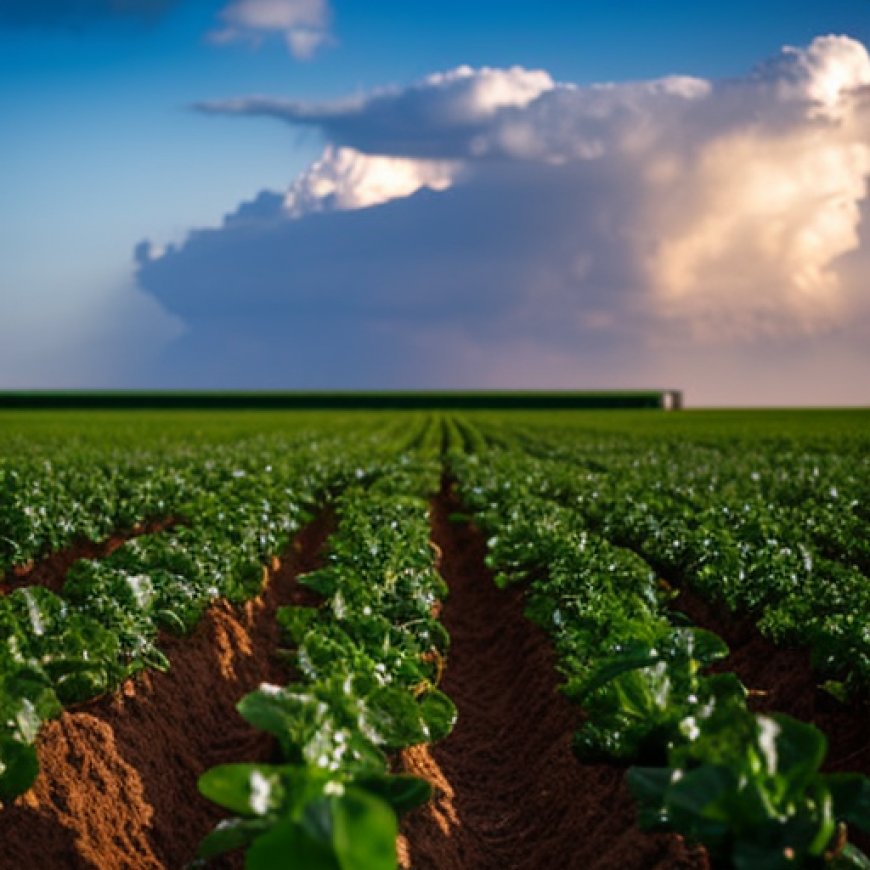How much US farmland does China own?
How much US farmland does China own? NewsNation Now


Chinese Ownership of American Agricultural Land on the Rise

Chinese investors have seen a significant increase in their ownership of American agricultural land in recent years, with holdings jumping fivefold over the past decade. As of 2021, Chinese entities and individuals owned about 384,000 acres of U.S. agricultural land, which is less than 1% of all foreign-owned agricultural land in the country, according to the latest data from the U.S. Department of Agriculture (USDA).
Chinese Ownership Distribution
- Half of the Chinese-owned acreage is owned by 85 Chinese investors, which can be individuals, companies, or the government.
- The other half is held by 62 American corporations with Chinese shareholders.
The majority of Chinese holdings, over 70% of the total acreage, are concentrated in the American South. Compared to other countries, China ranks 18th in total ownership, behind smaller nations like Denmark and Luxembourg.
China’s foreign investment in agriculture has been on the rise globally, including in the United States. From 2019 to 2021, Chinese ownership of U.S. agricultural land increased by 55%, from 247,000 acres to 384,000 acres. This is a significant uptick compared to the period between 2016 and 2019 when total Chinese ownership increased by less than 1%. Just a decade ago, Chinese investors held less than 70,000 acres in the U.S.
This trend has raised national security concerns among lawmakers. Earlier this year, plans by a Chinese company to build a corn mill in North Dakota were scrapped after pushback from locals and military officials.
Foreign Ownership of U.S. Agricultural Land
As of 2021, foreign entities and individuals held approximately 40 million acres of U.S. agricultural land, which accounts for about 3% of all privately held agricultural land in the country. The top five countries with the highest foreign-owned agricultural land are all allies:
- Canada: 31%
- The Netherlands: 12%
- Italy: 7%
- The United Kingdom: 6%
- Germany: 6%
Texas has the highest amount of foreign-held agricultural land with 5.3 million acres. In terms of percentage, Maine has the highest proportion of private agricultural land owned by foreign investors, with over 20%.
It is important to note that the data has some limitations. For example, sales of foreign-held U.S. farmland are not included, and a significant proportion of foreign-held acres (7.5%) were listed as “Country Not Listed,” according to the Congressional Research Service.
SDGs, Targets, and Indicators
1. Which SDGs are addressed or connected to the issues highlighted in the article?
- SDG 2: Zero Hunger
- SDG 15: Life on Land
- SDG 17: Partnerships for the Goals
2. What specific targets under those SDGs can be identified based on the article’s content?
- SDG 2.4: By 2030, ensure sustainable food production systems and implement resilient agricultural practices that increase productivity and production, that help maintain ecosystems, that strengthen capacity for adaptation to climate change, extreme weather, drought, flooding and other disasters, and that progressively improve land and soil quality.
- SDG 15.3: By 2030, combat desertification, restore degraded land and soil, including land affected by desertification, drought and floods, and strive to achieve a land degradation-neutral world.
- SDG 17.17: Encourage and promote effective public, public-private and civil society partnerships, building on the experience and resourcing strategies of partnerships.
3. Are there any indicators mentioned or implied in the article that can be used to measure progress towards the identified targets?
- Indicator for SDG 2.4: Proportion of agricultural area under productive and sustainable agriculture.
- Indicator for SDG 15.3: Proportion of land that is degraded over total land area.
- Indicator for SDG 17.17: Number of partnerships promoting sustainable agriculture and land management.
Table: SDGs, Targets, and Indicators
| SDGs | Targets | Indicators |
|---|---|---|
| SDG 2: Zero Hunger | 2.4: By 2030, ensure sustainable food production systems and implement resilient agricultural practices that increase productivity and production, that help maintain ecosystems, that strengthen capacity for adaptation to climate change, extreme weather, drought, flooding and other disasters, and that progressively improve land and soil quality. | Proportion of agricultural area under productive and sustainable agriculture. |
| SDG 15: Life on Land | 15.3: By 2030, combat desertification, restore degraded land and soil, including land affected by desertification, drought and floods, and strive to achieve a land degradation-neutral world. | Proportion of land that is degraded over total land area. |
| SDG 17: Partnerships for the Goals | 17.17: Encourage and promote effective public, public-private and civil society partnerships, building on the experience and resourcing strategies of partnerships. | Number of partnerships promoting sustainable agriculture and land management. |
Behold! This splendid article springs forth from the wellspring of knowledge, shaped by a wondrous proprietary AI technology that delved into a vast ocean of data, illuminating the path towards the Sustainable Development Goals. Remember that all rights are reserved by SDG Investors LLC, empowering us to champion progress together.
Source: newsnationnow.com

Join us, as fellow seekers of change, on a transformative journey at https://sdgtalks.ai/welcome, where you can become a member and actively contribute to shaping a brighter future.







